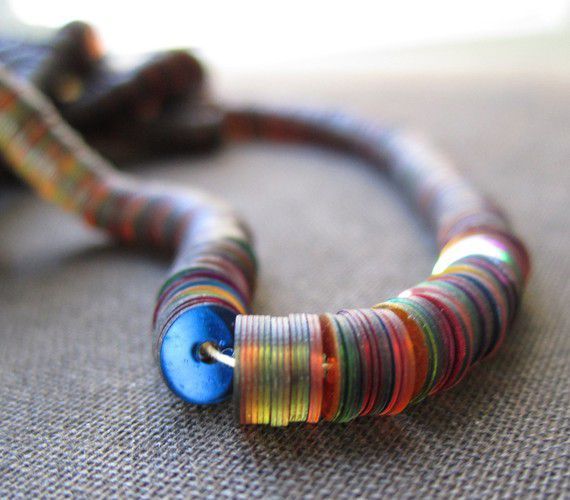I had never heard of gel sequins, so I googled it. According to Pinterest, these are vintage gel sequins:
According to Smithsonian, sequins were originally made of metal, which made highly sequined garments very heavy.
In the 1930s, a process to electroplate gelatin (hello, Jell-O…) produced a lighter-weight version of the shiny metal disks. But one major obstacle (besides the color being lead-based) was that the gelatin sequins were finicky; they would melt if they got wet or too warm. So getting caught in a thunderstorm could leave you in a sequinless sheath. Or, as the blog Fashion Preserved mentioned, “missing sequins can tell tales.” For instance, the warmth of a dance partner’s clammy hand on the back of a dress could melt the sequins. While not viable for their longevity on clothing, today they’ve become known for their edibility; it’s easy to find recipes to make palatable (although definitely not vegan) sequins from gelatin to decorate cakes and assorted baked goods.

Vintage French gelatin sequins, 60 to 100 years old. (Wikimedia Commons)
The guy behind our contemporary understanding of sequins is Herbert Lieberman. After realizing that gelatin sequins wouldn’t do the trick, he worked with Eastman Kodak, a company that had begun using acetate in its film stock in the 1930s (acetate film is a specific type of plastic material called cellulose acetate) to develop acetate sequins. They looked beautiful but were still fragile. As Lieberman told Fanzine magazine:
“The light would penetrate through the color, hit the silver, and reflect back,” he says. “Like you painted a mirror with nail polish.” Brilliant, but brittle. “Acetate will crack like glass. The harder the plastic, the nicer the sequin’s going to be.”
In 1952, DuPont invented Mylar and that changed the sequin game yet again. The largest sequin producer, the Lieberman-owned company Algy Trimmings Co., now based in Hallandale Beach, Florida, adopted the transparent polyester film. Mylar surrounded the plastic colored sequin and protected it from the washing machine. Voila! Or, sort of.
Eventually the Mylar-acetate combination was discarded for vinyl plastic. More durable and cost effective, yes. (Although we now know that eventually the vinyl plastic curls and loses its shape.) Just as sparkly? Not quite, but good enough.
Leave a Reply